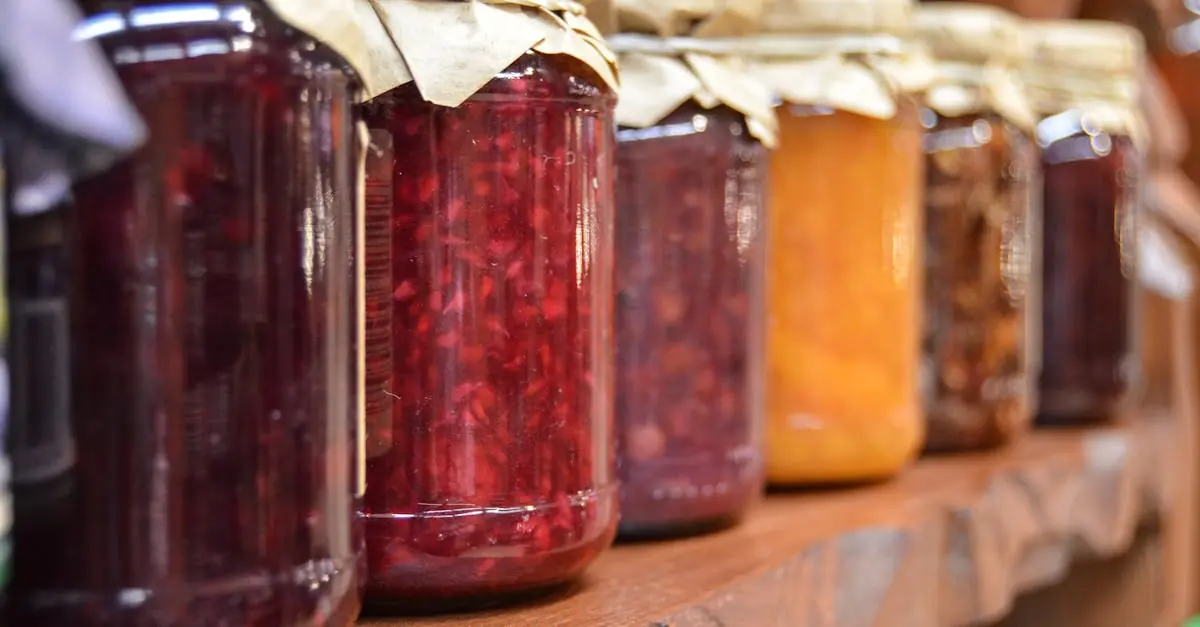When it comes to baby-led weaning, the adventure doesn’t stop at the high chair. Enter the world of food storage, where creativity meets practicality. Parents often find themselves juggling purees and finger foods like a circus performer, but with the right storage solutions, it doesn’t have to feel like a three-ring circus.
Table of Contents
ToggleUnderstanding Baby-Led Weaning
Baby-led weaning allows infants to explore solid foods largely at their own pace. Parents provide whole pieces of food appropriate for infants to grasp. This method encourages self-feeding and develops motor skills, coordination, and independence.
Finger foods play a crucial role in this feeding approach. Parents present a variety of textures, colors, and flavors, exposing babies to diverse food experiences. This practice promotes familiarity with different tastes, aiding acceptance of various foods later in life.
Food storage becomes essential when managing finger foods effectively. Parents benefit from using airtight containers for storing prepped fruits, vegetables, and other items. By organizing foods in the refrigerator or freezer, they maintain freshness and ensure safe feeding at mealtime.
Planning ahead significantly helps parents navigate the weaning journey. Prepping meals in batches minimizes daily stress and allows families to enjoy a variety of nutritious options. Using ice cube trays for purees is a smart strategy, enabling easy thawing and portion control.
Safe food handling practices are key during this process. Clean hands, counters, and utensils prevent contamination. Understanding proper storage and reheating methods ensures that all foods remain safe for infants.
Encouragement fosters a positive mealtime environment. Parents observing their infants exploring foods and developing preferences create enriching experiences. By highlighting exploration, discovery, and enjoyment, baby-led weaning transforms the feeding journey into an engaging adventure.
Importance of Food Storage in Baby-Led Weaning
Effective food storage supports a successful baby-led weaning journey. Properly stored foods help maintain their nutritional value and freshness, ensuring infants receive the essential nutrients they need for growth.
Nutritional Considerations
Nutritional considerations play a vital role in food storage practices. Parents should choose fresh, seasonal fruits and vegetables to provide diverse flavors and textures. Storing these foods at the right temperature preserves vitamins and minerals. For example, many fruits retain their nutrients for a week when stored in the refrigerator. Labeling containers with dates helps parents use the oldest items first, reducing waste and ensuring meals are nutrient-rich. Utilizing freezer-safe options extends the life of purees and finger foods while preserving quality. A diverse diet encourages healthy eating habits, so considering variety during storage remains important.
Safety and Hygiene
Safety and hygiene remain paramount in food storage for baby-led weaning. Cleaning hands and surfaces before meal prep reduces the risk of contamination. Using airtight containers protects foods from bacteria and moisture, which can lead to spoilage. Storing leftovers within two hours prevents harmful bacteria growth, while proper refrigeration maintains freshness. Avoiding cross-contamination ensures safety; separate containers for raw and cooked foods minimize risks. Regularly checking expiration dates on foods helps parents stay aware of what’s safe to serve. Lastly, boiling or steaming foods before serving can add an additional safety measure for ensuring that meals are both healthy and safe for infants.
Best Practices for Baby-Led Weaning Food Storage
Effective food storage enhances the baby-led weaning experience, ensuring meals stay fresh and safe. Following best practices leads to healthier feeding opportunities.
Choosing the Right Containers
Airtight containers play a critical role in preserving food freshness. Glass containers with airtight lids offer visibility and durability. BPA-free plastic containers are lightweight and safe for food use. Opt for different sizes to accommodate various food portions. Small containers work well for snacks, while larger ones suit meal prep. Labels with dates ensure parents track freshness effectively.
Guidelines for Freezing and Thawing
Freezing helps retain nutrients in baby-led weaning foods. Use freezer-safe containers to prevent freezer burn and maintain quality. Portion food into manageable sizes, allowing easy access and reuse. When thawing, place food in the refrigerator or use a microwave on low power. Thawing at room temperature increases the risk of bacterial growth. Always check food temperatures before serving, ensuring they reach a safe level. Following these guidelines helps maintain food quality and safety.
Tips for Organizing Your Baby’s Food
Organizing baby food improves mealtime efficiency and ensures freshness. Streamlined organization makes the baby-led weaning experience smoother for both parents and infants.
Labeling and Dating
Labeling containers enhances food organization and safety. Write the preparation date on each container. This practice helps parents track freshness, allowing them to use older items first. Choosing reusable labels offers a sustainable solution, enabling easy updates as food is consumed. Clear, legible writing prevents confusion regarding contents. Proper dating reduces food waste, ensuring infants always receive nutritious meals. Parents can quickly locate meals, making mealtime more efficient.
Portion Control
Portion control simplifies feeding and reduces waste. Preparing small portions aids in offering various foods without overwhelming the child. Using containers or ice cube trays allows for easy portioning. Storing single servings helps parents quickly access meals, making the process more manageable. Ensuring portions meet the infant’s developmental stage supports safe exploration. Adjusting sizes as the child grows promotes balanced nutrition during baby-led weaning. Easy access to manageable portions makes feeding a more enjoyable experience for both parent and child.
Effective food storage is a cornerstone of a successful baby-led weaning experience. By utilizing the right containers and following best practices, parents can ensure that meals remain fresh and safe. This not only supports the nutritional needs of their infants but also enhances the overall mealtime experience.
Investing in quality storage solutions and being mindful of portion sizes can simplify the feeding process. With proper organization and labeling, parents can reduce waste and maintain a variety of flavors and textures for their little ones. Embracing these strategies transforms mealtime into an enjoyable adventure for both parents and children.



